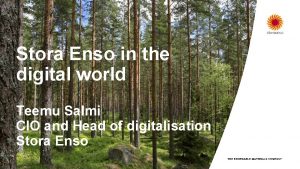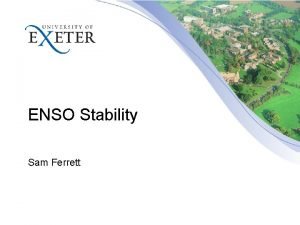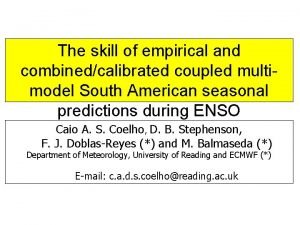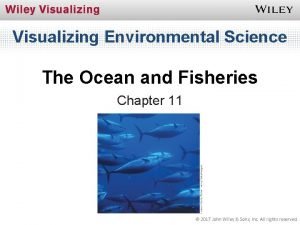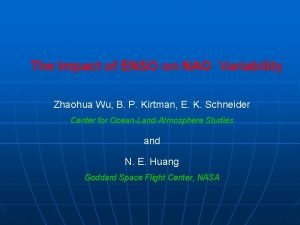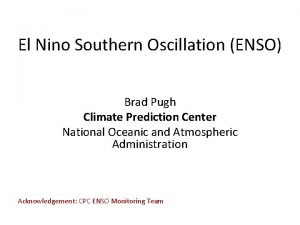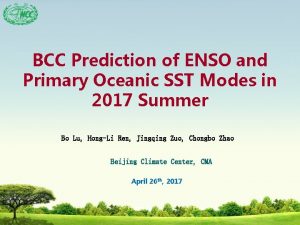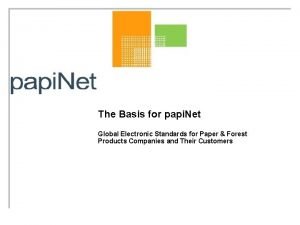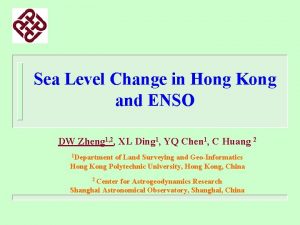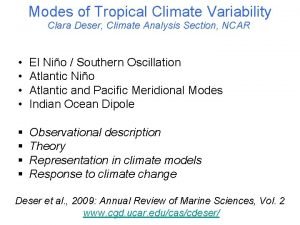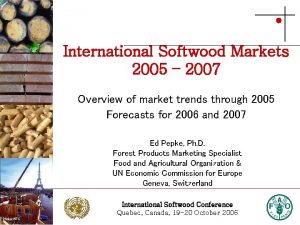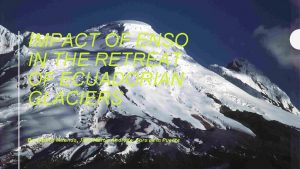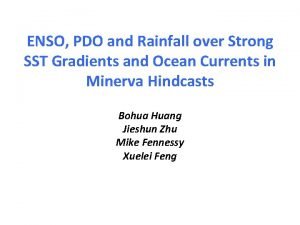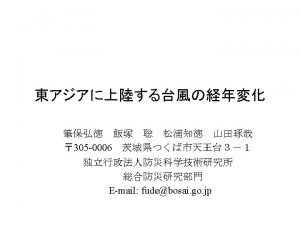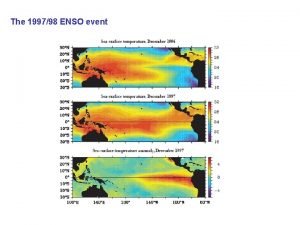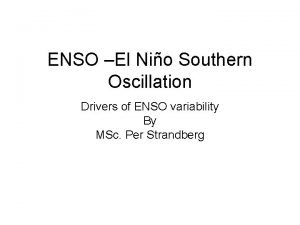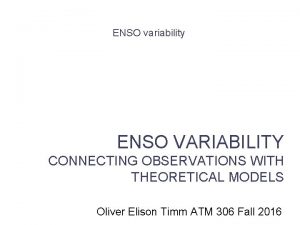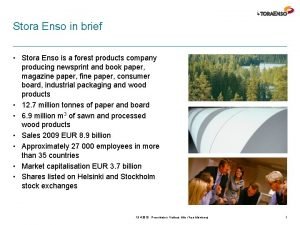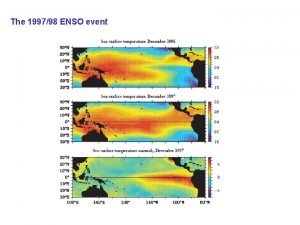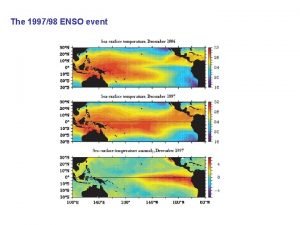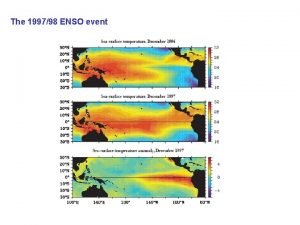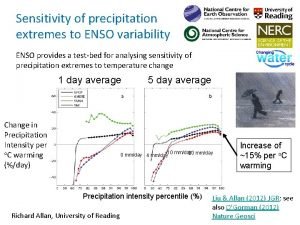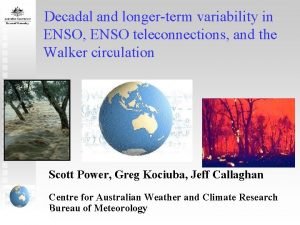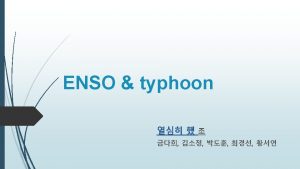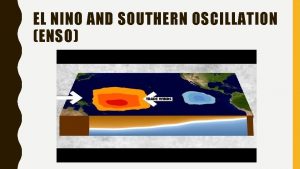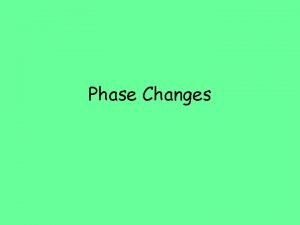ENSO Theory How does the phase of ENSO
















- Slides: 16

ENSO - Theory • How does the phase of ENSO reverse? • What triggers an El Nino event?

Power Spectrum • What determines the 4 -year periodicity?

Equatorial Waves • Equatorial waves in the ocean are believed to play an important role in the onset and variability of ENSO • Two types: – Kelvin waves (propagate eastward along the equator and also along coasts) – Rossby waves (long waves propagate westward) • The relevant waves are baroclinic: internal to the ocean, propagating along the density contrast of thermocline • Equatorial Kelvin waves travel 3 times faster than the fastest equatorial Rossby waves

How does the phase of ENSO reverse? Delayed Oscillator Theory • Westerly winds force downwelling on Equator and upwelling to North and South Battisti and Hirst, 1989; Suarez and Schopf, 1988 Thermocline depth => Excites Kelvin and Rossby waves Figures from IRI: http: //iri. columbia. edu/climate/ENSO/theory/

Delayed Oscillator Theory 2 Upwelling Downwelling Rossby waves Kelvin wave 25 days 75 days 50 days 100 days

Delayed Oscillator Theory 3 125 days 225 days 175 days 275 days Phase has reversed


Delayed Oscillator Theory 4 • Equatorial ocean waves offer a mechanism to reverse the phase of perturbations to thermocline depth • Without further wind forcing waves eventually decay • Thermocline depth perturbations influence SST in the upwelling regions of central / eastern equatorial Pacific => coupling to atmosphere • Bjerknes feedback + equatorial waves can generate a self-sustaining oscillation


Recharge/Discharge theory (Jin, 1997) recharged discharging Source: A. Timmermann • Prior to El Nino heat content in equatorial region builds up • During El Nino heat is “discharged” eastward and polewards discharged


Equatorial temperature sections

What triggers El Nino? • Still not fully understood • High heat content (deep thermocline) in the equatorial region necessary but not sufficient condition • “Westerly wind bursts” (few days duration) associated with the Madden Julian Oscillation may act as one trigger. G. Vecchi

Onset of the 1997/98 El Nino Downwelling equatorial Kelvin waves triggered by westerly wind bursts

Summary of El Nino onset • Need high heat content in equatorial Pacific • Triggering by wind fluctuations (e. g. WWBs) over central/western Pacific • Growth through Bjerknes positive feedback mechanism

Theories for ENSO Oscillations • Delayed Oscillator (e. g. Battisti and Hirst, 1989; Suarez and Schopf, 1988 • Recharge/discharge theory (Jin, 1997) • Western Pacific Oscillator (e. g. Weisberg, R. H. , and C. Wang, 1997) • Advective-Reflective Oscillator (e. g. Picaut et al, 1997) • Unified Oscillator (Wang, 2001 J Clim)

